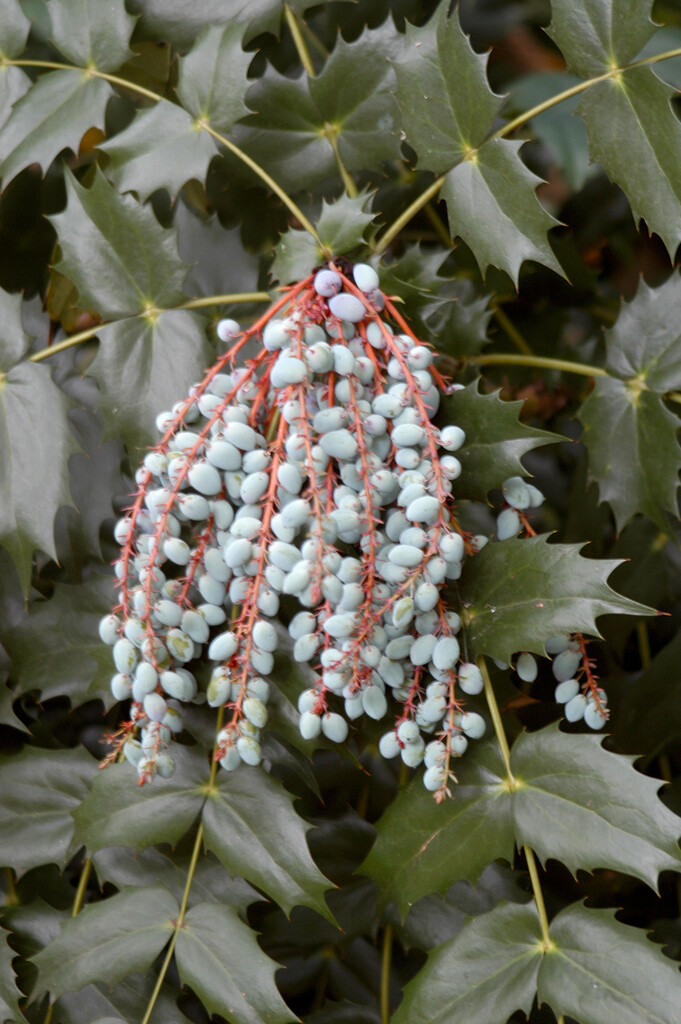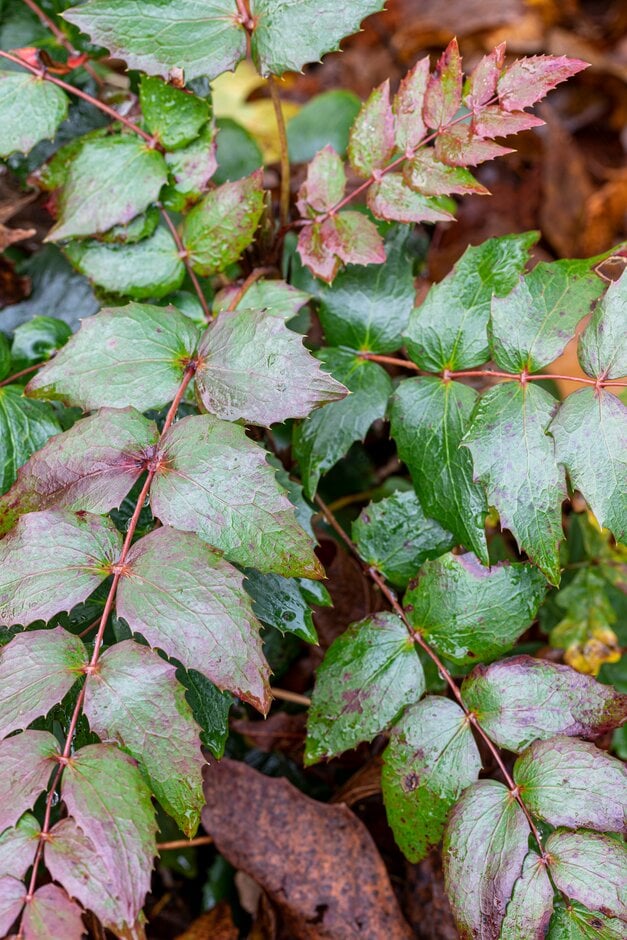Mahonia nervosa
Oregon grape
A compact, suckering, evergreen shrub to around 60cm tall with leaves made up of dark green, spiny-edged leaflets that may turn red in winter. Yellow flowers are borne in dense clusters 15-20cm long in late spring and early summer and followed by blue-black fruits
Size
Ultimate height
0.5–1 metresTime to ultimate height
5–10 yearsUltimate spread
0.5–1 metresGrowing conditions
Moisture
Moist but well–drained, Well–drainedpH
Acid, Alkaline, NeutralColour & scent
| Stem | Flower | Foliage | Fruit | |
| Spring | Yellow Green | |||
|---|---|---|---|---|
| Summer | Yellow | Green | Blue Black | |
| Autumn | Green | Blue Black | ||
| Winter | Green Red |
Position
- Full sun
- Partial shade
Aspect
East–facing or North–facing or South–facing or West–facing
Exposure
Sheltered Hardiness
H6Botanical details
- Family
- Berberidaceae
- Native to GB / Ireland
- No
- Foliage
- Evergreen
- Habit
- Bushy
- Potentially harmful
- Berries are ornamental, not to be eaten. Wear gloves and other protective equipment when handling
- Genus
Mahonia are evergreen shrubs with leathery, pinnate leaves which are often spine-toothed, and clustered racemes of sometimes fragrant yellow flowers, sometimes followed by black or purple berries
- Name status
Correct
- Plant range
- Western N America
How to grow
Cultivation
Grows in most moisture-retentive soils in full or partial shade
Propagation
Propagate by semi-hardwood cuttings, by seed or by rooting suckers
Suggested planting locations and garden types
- Cottage and informal garden
- Wildlife gardens
- Low Maintenance
- Banks and slopes
- Flower borders and beds
Pruning
Pests
Generally pest-free
Diseases
May be susceptible to a rust and powdery mildews
Love gardening
Sign up to receive regular gardening tips, inspiration, offers and more
View our Privacy Policy
Get involved
The Royal Horticultural Society is the UK’s leading gardening charity. We aim to enrich everyone’s life through plants, and make the UK a greener and more beautiful place.

